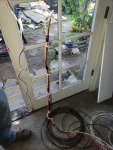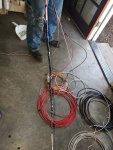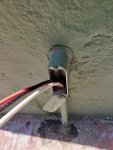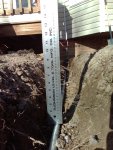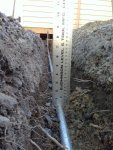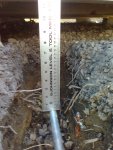It went!
Three #8awg THHN plus a bare #10awg in a 1/2" EMT
I think some extra steps really helped:
I cleaned and lubed the inside of the conduit with bits of rag tied on a pull string. First one soaked with 409, pulled through, more 409 at the far end and pulled back again. This yielded a good bit of dirt and grime. Then change rags and same process with acetone. Then same process again with conduit lube. So the pipe was as clean as possible and pre-lubed.
For the pulling head I stripped all the wires about 18", staggered the beginning insulation points by a few inches, cut the wires so their beginning points were staggered by 3" or so, tied 4 or 5 half hitches only on the stripped portion, and tape wrapped over all. This way the head had a very long gradual taper and never exceeded the diameter of the finished install, see photo.
I taped a radiator funnel over the entry conduit to make it easy to squirt lube into the pull. I got my son who can probably dead lift 500 lbs. to pull while I fed, keeping everything aligned and neat and squirting a whole quart of lube while it went.
As predicted the last several feet of the pull required a lot of force to get around the third bend, but around she went!
Thank you everyone here for the help.

